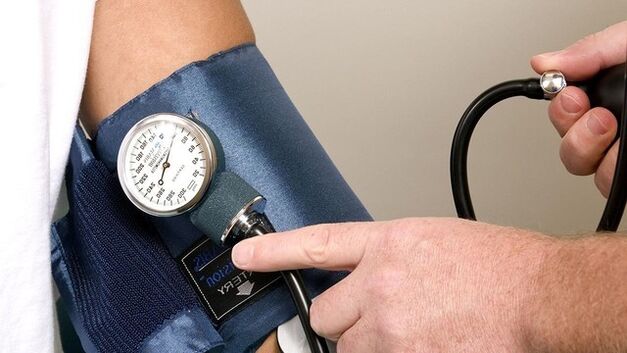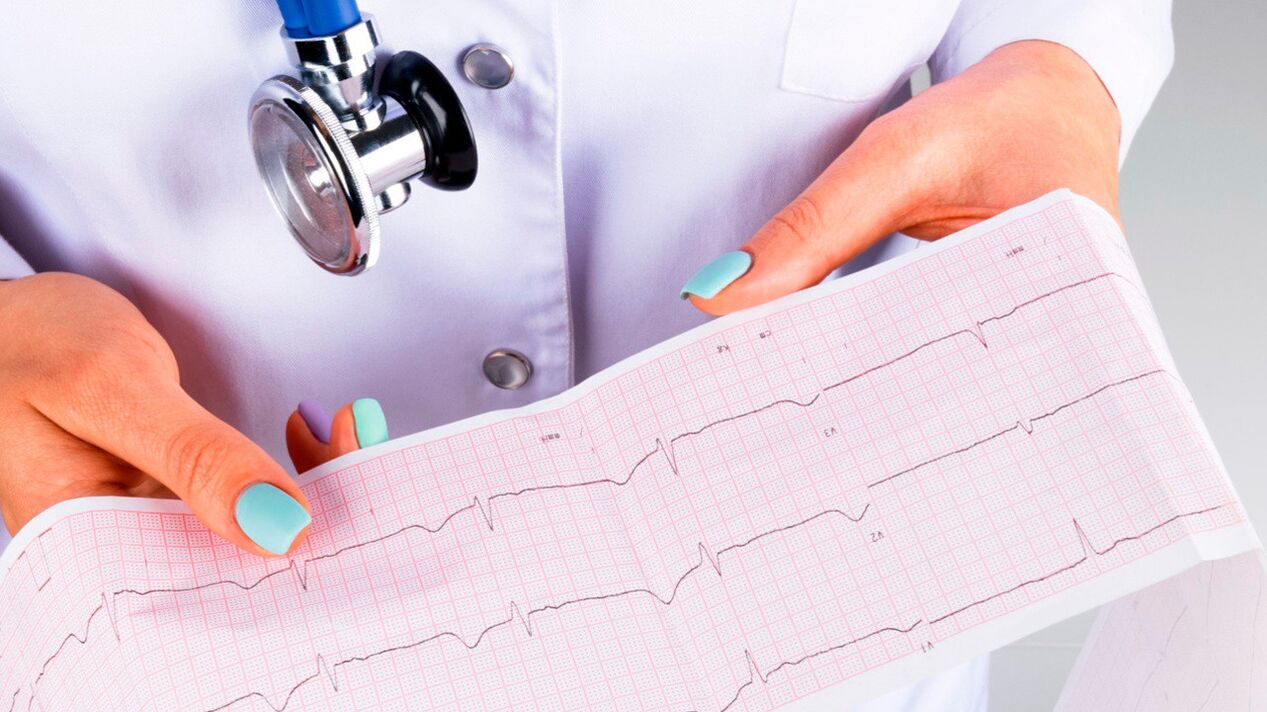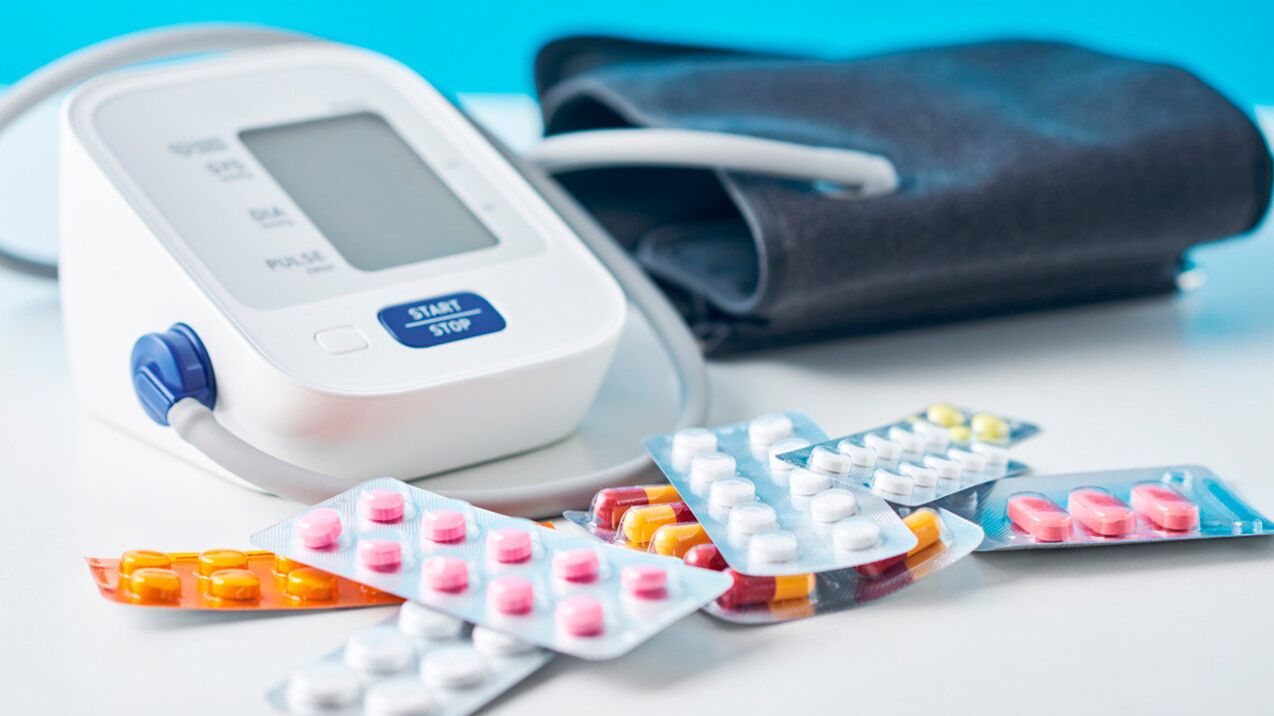
High blood pressure is one of the most common cardiovascular diseases. According to WHO, more than 1. 1 billion people suffer from it. worldwide. High blood pressure increases the risk of developing other heart diseases. High blood pressure is one of the most common causes of death and the disease is becoming increasingly younger. It occurs not only in older people but also in young people. Below you will learn why it occurs, how to recognize it and control it.
What is high blood pressure?
This is a chronic disease with high blood pressure. It is recorded as two numbers and the optimal value is 120/80 mmHg. Art. The first number is the systolic pressure, which occurs when blood is ejected from the left ventricle into the aorta at the time of systole (contraction of the heart's chambers). The second number indicates the diastolic pressure when the heart muscle is relaxed. Blood pressure increases with physical activity and emotional excitement, but it should be close to normal at rest. If, during several measurements at different times, the systolic pressure exceeds 139 mmHg. Art. and/or diastolic pressure exceeds 90 mmHg. Art. who was diagnosed with high blood pressure.
A persistent increase in blood pressure is associated with several factors, including obesity and lack of exercise, poor diet, bad habits and high levels of stress.
Causes and risk factors
High blood pressure can be primary or secondary:
- primary (essential)High blood pressure is more common – 85-95% of cases, according to various estimates. Its occurrence is not associated with comorbidities; pressure increases under the influence of a number of factors;
- secondary (symptomatic)High blood pressure occurs in 5-15%. In this case, hypertension is one of the symptoms that may accompany endocrine disorders, kidney disease and large vessel abnormalities.
When the regulation and maintenance of optimal blood pressure is impaired, primary hypertension occurs. The cause of its occurrence is usually constant nervous overload. When making a diagnosis, it is important to determine as accurately as possible what causes high blood pressure and whether there are secondary causes (the presence of diseases that cause increased blood pressure).
There are a number of risk factors that increase the risk of developing primary hypertension:
- overweight (obesity);
- insufficient activity, physical inactivity, lack of physical activity;
- drinking alcohol and smoking;
- Stress, constant emotional tension;
- lack of sleep, poor quality, insomnia;
- excessive salt intake;
- incorrectly organized sleep and rest patterns (also due to irregular or excessively long working hours);
- Changes in hormonal levels (in women, taking oral contraceptives may accompany the onset of menopause);
- hereditary factors (in total, more than 20 genes have been identified that determine the predisposition to hypertension);
- Age over 65 years (the disease can occur even in young people; it is worth regularly monitoring blood pressure after 35 years);
- poor nutrition (lack of vegetables and fruits in the diet, excess of foods high in trans fats and saturated fats);
- Kidney disease, diabetes mellitus and some other related ailments and diseases.
Many of these factors are interconnected and reinforce each other. Some of these can be controlled (for example, diet and nutrition, sleep, physical activity, weight, alcohol consumption, smoking). This is an easy way to reduce your risk of high blood pressure or improve your well-being if your blood pressure is already elevated.
classification
Two approaches are used to classify the disease: by degrees and stages. The degrees of hypertension differ in the values to which blood pressure rises, the difference between the stages lies in the course of the disease, in the number, severity of accompanying organic lesions.
First degree
Systolic blood pressure – more than 139 and less than 159 mmHg. Art. and diastolic is 90-99 mm Hg. Art. Art. If the values are elevated, blood pressure can be normalized by making lifestyle adjustments. To do this, you need to increase physical activity, adjust your diet, give up bad habits and reduce stress.
Second degree
In the second degree, blood pressure values become high and amount to 160-179 mm Hg. Art. for systolic and 100-109 mm Hg. Art. for diastolic. At such values, the load on the heart increases significantly. The blood supply to the brain deteriorates, which can lead to headaches, dizziness and reduced performance. There are changes in the back of the eye. Sclerosis of the tissues and blood vessels of the kidneys begins, the excretory function is impaired and kidney failure may develop. The condition of the blood vessels worsens. For treatment, you need to change your lifestyle and start taking medications.
Third degree
The systolic pressure value is over 180 mm Hg. Art. , diastolic - over 110 mm Hg. Art. Art. With high blood pressure, the strain on the heart becomes too high and leads to irreversible changes. Blood pressure must be constantly reduced with medication. Without this, there is a risk of acute heart failure, cardiac arrhythmias, angina pectoris, heart attack and other serious illnesses. Patients with stage 3 hypertension need constant monitoring by a doctor. Continuous use of antihypertensive medication is necessary.
| Arterial pressure | Systolic (mm Hg) | Diastolic (mm Hg) |
|---|---|---|
| fine | < 130 | < 85 |
| Usually so-called prehypertension | 130-139 | 85-89 |
| 1 - mild hypertension | 140-159 | 90-99 |
| 2 - moderate hypertension | 160-179 | 100-109 |
| 3 - severe hypertension | ≥ 180 | ≥ 110 |
Stages of hypertension
The disease develops gradually. There are three stages in total.
- First stage:moderate high blood pressure. Blood pressure is unstable and can fluctuate throughout the day. At this stage, the condition of the internal organs and the central nervous system remains normal, there are no signs of organic damage. Hypertensive crises are rare and relatively mild.
- Second floor:severe high blood pressure. In the second stage, there is a significant increase in blood pressure, health often worsens and severe hypertensive crises occur. At this stage, changes begin in the internal organs due to constantly high blood pressure. Vascular disorders occur and the blood supply to the brain deteriorates. The retinal arteries narrow. Hypertrophy of the left ventricle develops, increasing the risk of serious heart disease. Signs of kidney dysfunction appear (increased albumin levels in urine, increased creatinine levels in blood serum)
- Third section:very severe high blood pressure. Blood pressure becomes critically high - over 200 mm Hg. Art. for systolic and 125 mm Hg. Art. for diastolic. Organic lesions intensify, heart failure, thrombosis of cerebral vessels, aneurysms, kidney failure and other serious diseases occur. Severe hypertensive crises often occur.
Symptoms
Even if there is a significant increase in blood pressure, high blood pressure may remain asymptomatic for a long time. For this reason, you should measure your blood pressure regularly (monitoring is especially important for people over 35 years old). You can measure your blood pressure using an automatic electronic tonometer - such devices are sold in pharmacies.
The main symptoms of high blood pressure include headaches, dizziness and a feeling of heaviness in the head. These manifestations are associated with vascular spasm and deterioration of blood supply to the brain. Possible nosebleeds, ringing in the ears, visual disturbances, cardiac arrhythmias. In severe cases of high blood pressure, weakness, chest pain, nausea, vomiting, and tremors ("shaky" muscles) may occur. Other symptoms include blurry or black spots in front of the eyes, difficulty sleeping, heart palpitations, and tinnitus.
As the disease progresses, visual acuity gradually decreases, sensitivity of the arms or legs may decrease, and in severe cases paralysis is possible. During periods of stress, against the background of nervous stress or physical activity, the symptoms can increase. They are more common in middle-aged and older people. The disease is more serious if you are overweight, have bad habits, tend to overeat, or suffer from high levels of stress.
You should see a therapist or cardiologist if you regularly experience headaches, dizziness, or vision problems, or if your blood pressure is frequently elevated when you measure your blood pressure yourself.
diagnosis
Typically, diagnosis occurs in three directions:
- Blood pressure measurement.Carried out at intervals of several hours or over 2-3 days to determine the degree of hypertension and its stage;
- Identification of the causes of the disease.It is important to determine whether high blood pressure is primary or secondary (caused by other diseases). In the second case, specific treatment may be required;
- Monitoring general health status.During the examination, the condition of the heart, cerebral vessels, fundus and kidneys is monitored. The function of these organs is impaired due to high blood pressure. When making a diagnosis, it is important to assess their condition.
At the first appointment, the doctor will conduct a survey and collect anamnesis data relating to the disease. Information is needed about how long the patient has had hypertension, what the blood pressure is, whether there are symptoms of heart disease, respiratory failure or heavy snoring, whether the person or their close relatives have had strokes or peripheral arterial disease. Gout, diabetes, kidney disease. The doctor will definitely ask questions about lifestyle: physical activity, bad habits, diet, taking medications.
The following examinations are carried out in patients with arterial hypertension:
- Blood pressure measurement.The measurement is carried out several times at rest (physical activity, caffeine consumption, smoking are excluded half an hour before the measurement), the measurements are taken at different times of the day;
- general examination:Measurement of height and weight, waist circumference, palpation of the abdomen, assessment of peripheral artery pulsation;
- Analysis of urine.Albumin and creatinine levels are important - deviations from the norm indicate renal dysfunction and require an ultrasound scan;
- Blood analysisTo monitor potassium, creatinine and lipid levels, ultrasound of the kidneys is prescribed. To control lipid metabolism, an assessment of lipid levels is necessary to exclude the risk of complications in the cardiovascular system.
- ECGCarried out when left ventricular hypertrophy is detected to monitor the condition of the heart.

In addition, the doctor may refer the patient for a cardiological or neurological examination or respiratory examination.
Treatment of high blood pressure
Arterial hypertension is a disease that cannot be completely cured but can be controlled. Therapy and lifestyle changes can stop the development of hypertension, reduce the frequency and severity of crises, and eliminate symptoms. But the most important thing is to reduce the risks to the cardiovascular system, brain and kidneys.
Treatment begins with lifestyle adjustments:
- stop smoking;
- Refusal to consume alcohol or significantly restrict the amount of alcohol;
- Diet: The diet is adjusted, salt intake is reduced (less than 3. 75 g per day), the amount of vegetables and fruits is increased (ideally 5 servings per day are required), whole grains, dairy products, low-fat products, etc. The calorie intake islimited. In the absence of contraindications or kidney disease, increase the consumption of foods containing potassium (spinach, beans, pumpkin, fish, milk, kefir, yogurt and others);
- Increasing physical activity. Moderate exercise is recommended to promote weight loss and strengthen the cardiovascular system.
During treatment, blood pressure is reduced to target levels (below 130/80 mmHg) to reduce the risk of complications. With such a decline, constant monitoring by a doctor is necessary. A tonometer used for home measurements needs to be calibrated regularly. Particular caution is required when taking antihypertensive drugs in patients with diabetes, pregnant women, the elderly and weakened people.
The following can be used to treat high blood pressure:
- adrenergic modifiers.They reduce sympathetic nervous system activity and lower blood pressure, but can cause drowsiness and lethargy and are therefore rarely used;
- ACE inhibitors.Reduce peripheral vascular resistance, often prescribed to patients with diabetes.
- Angiotensin II receptor blockers.They have a similar effect to ACE inhibitors and are therefore not prescribed together with them. Not prescribed during pregnancy;
- Beta blockers.Reduce blood pressure by slowing heart rate;
- Calcium channel blockers.They reduce total peripheral vascular resistance and can cause reflex tachycardia;
- direct vasodilators.They act directly on the blood vessels and are used for severe hypertension;
- Diuretics.They reduce blood plasma volume, which lowers blood pressure but can also cause hyperkalemia.
Important! A therapist or cardiologist should prescribe medications and their dosage after an examination. Taking medications without a doctor's prescription can be dangerous.
If your doctor prescribes medication, you will need to undergo regular follow-up visits to assess and adjust the effectiveness of the treatment. It is important to adjust your lifestyle and restore normal health, so a minimal amount of medication is required to control the course of hypertension.

Possible complications
The increased blood pressure causes the artery walls to lose their elasticity and the heart muscle works too hard. This increases the risk of angina, acute heart failure and heart attack. Due to impaired blood supply to the brain, transient ischemic attacks and strokes are possible. Without treatment and lifestyle correction, the severity of hypertension will increase: the pressure will continue to rise, leading to damage to internal organs and worsening overall health and well-being. Smoking, alcohol consumption, overeating, lack of exercise and high stress accelerate the development of high blood pressure and make the course more complex.
Follow
Without treatment, arterial hypertension has serious consequences. Constant spasm of cerebral vessels leads to ischemia and stroke. They are dangerous and can cause serious disability and even death. If the load on the heart muscle becomes too high, tachycardia, cardiac arrhythmias and heart failure occur. Without treatment, a heart attack is possible.
The severity of hypertensive crises increases, they become more complicated, life-threatening and can be accompanied by stroke, acute coronary syndrome and other serious diseases. The quality of life against the background of hypertension without adequate therapy and restoration of normal health decreases sharply, up to severe disability.
forecast
The prognosis is good if the patient consults a doctor in a timely manner and takes measures to control blood pressure and factors affecting hypertension. In this case, it is possible to avoid the long-term consequences of hypertension and its severe course. Even severe arterial hypertension requires treatment and lifestyle adjustments.
prevention
To prevent hypertension, self-monitoring of blood pressure is recommended from the age of 35 or when hypertension symptoms occur. It is important to eliminate the effects of factors provoking an increase in blood pressure: control your diet, avoid smoking and alcohol, reduce stress, devote more time to physical activity: in short, lead a healthy lifestyle.
Diploma
High blood pressure is a dangerous disease, but it can be controlled by maintaining normal health and reducing the risk of complications. To do this, it is important to monitor blood pressure, control weight, lead a healthy lifestyle and undergo preventive examinations with a therapist or cardiologist.
























